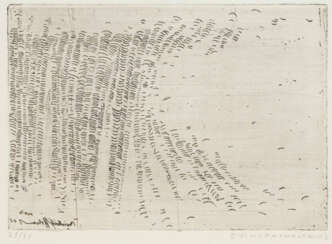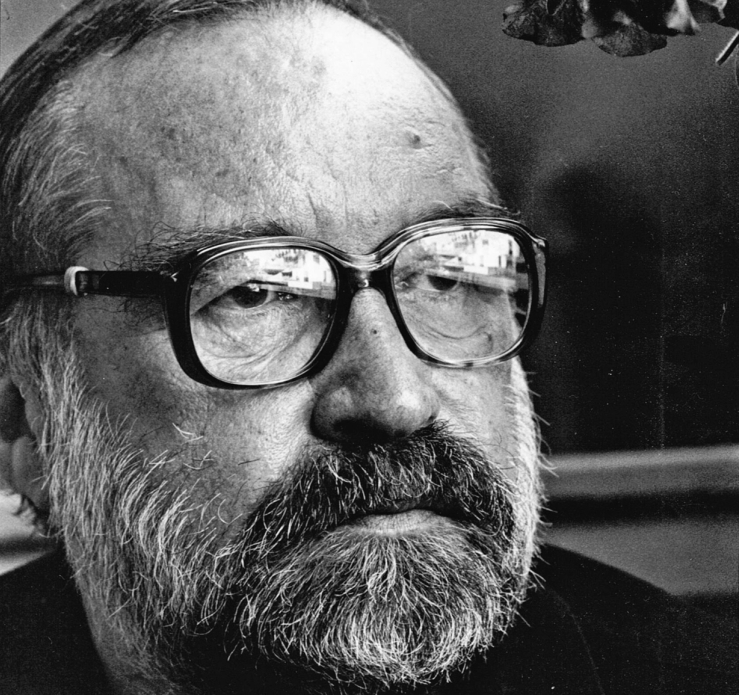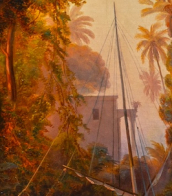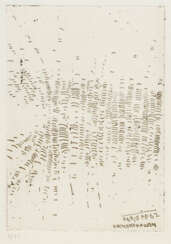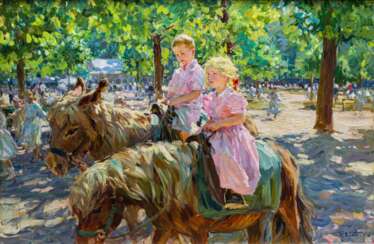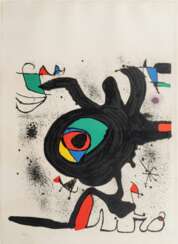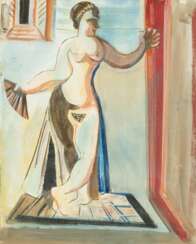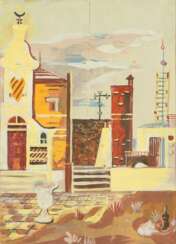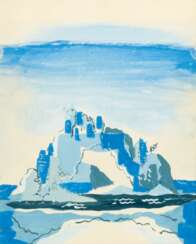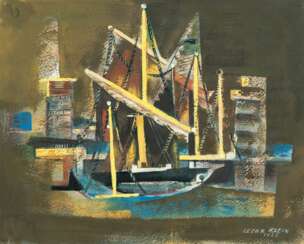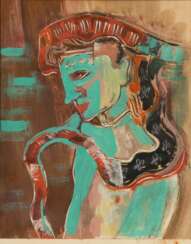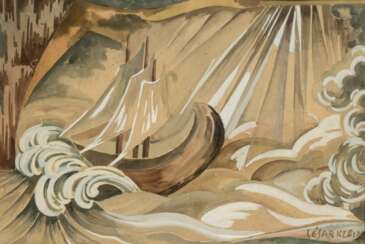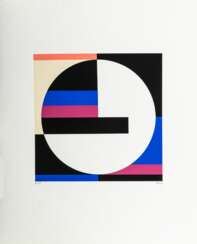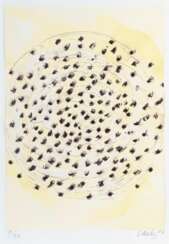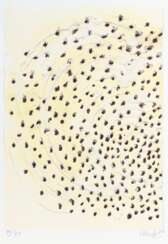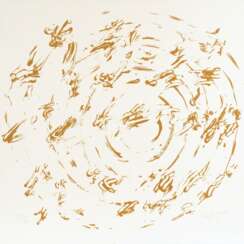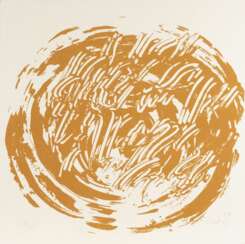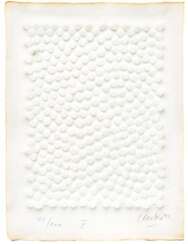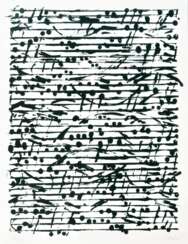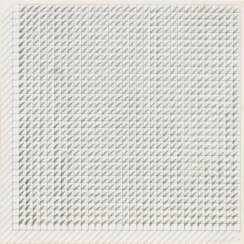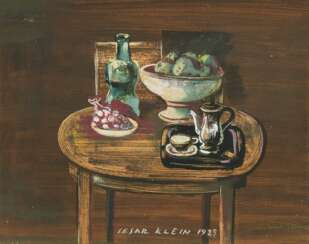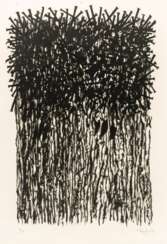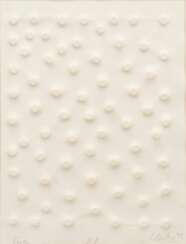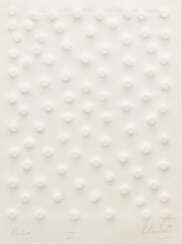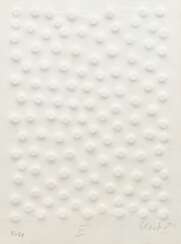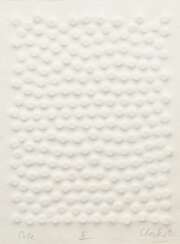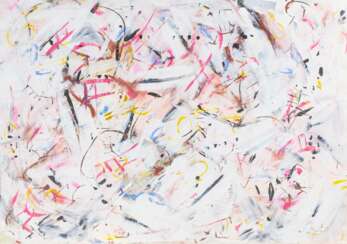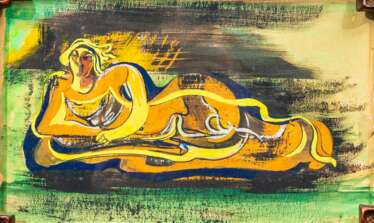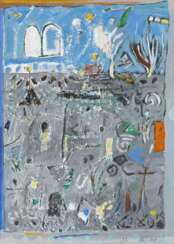klassische moderne bis zeitgenössische kunst

Joan Miró, a celebrated Spanish artist, was a master in painting, sculpture, and ceramics, renowned for his unique style that blurred the lines between Surrealism, Fauvism, and Expressionism. Born in Barcelona to a family of a goldsmith and a watchmaker, Miró grew up immersed in the rich cultural heritage of the Barri Gòtic neighborhood. His artistic journey began with drawing classes at the age of seven and continued at the prestigious La Llotja art academy. Despite an initial venture into the business world, Miró's passion for art prevailed, leading him to abandon his clerical career after a nervous breakdown.
Miró's work is noted for its exploration of the subconscious, often depicting a childlike perspective. This approach was both a critique of traditional painting methods and a means of expressing Catalan pride. His art, challenging to categorize, often featured symbolic elements and nationalistic qualities. One of his notable early works, "The Farm," reflects a transition to a more individual style, blending elements of his Catalan roots with broader artistic influences. This piece, later purchased by Ernest Hemingway, encapsulated the essence of Spain in its imagery.
In Paris, Miró joined the Surrealist movement in 1924, where his work began to reflect the influence of automatism, emphasizing spontaneous, automatic, or subconscious creation. He experimented with various mediums, including painting-poetry and collage, and even ventured into set and costume design for Sergei Diaghilev's Ballets Russes.
During World War II, Miró remained in Spain, and his work from this period, including the 22 Constellations series, reflected an interest in the night, music, and stars. His forms became increasingly abstracted, and he experimented with various techniques, often incorporating primary colors and evocative titles.
Miró's career spanned several decades, during which he continually evolved his style and explored new mediums. His contributions to art were recognized with numerous awards and retrospectives, including a major career retrospective at MoMA in 1941 and the Spanish Gold Medal for Fine Arts in 1980. Among his last major works was a tapestry for the World Trade Center in New York City, created in 1974.
For art collectors and enthusiasts, Joan Miró remains a figure of immense interest, not only for his distinct style and contributions to Surrealism but also for his ability to blend poetic imagery with political commentary. To stay updated on new product sales and auction events related to Joan Miró, sign up for our updates and immerse yourself in the world of this extraordinary artist.

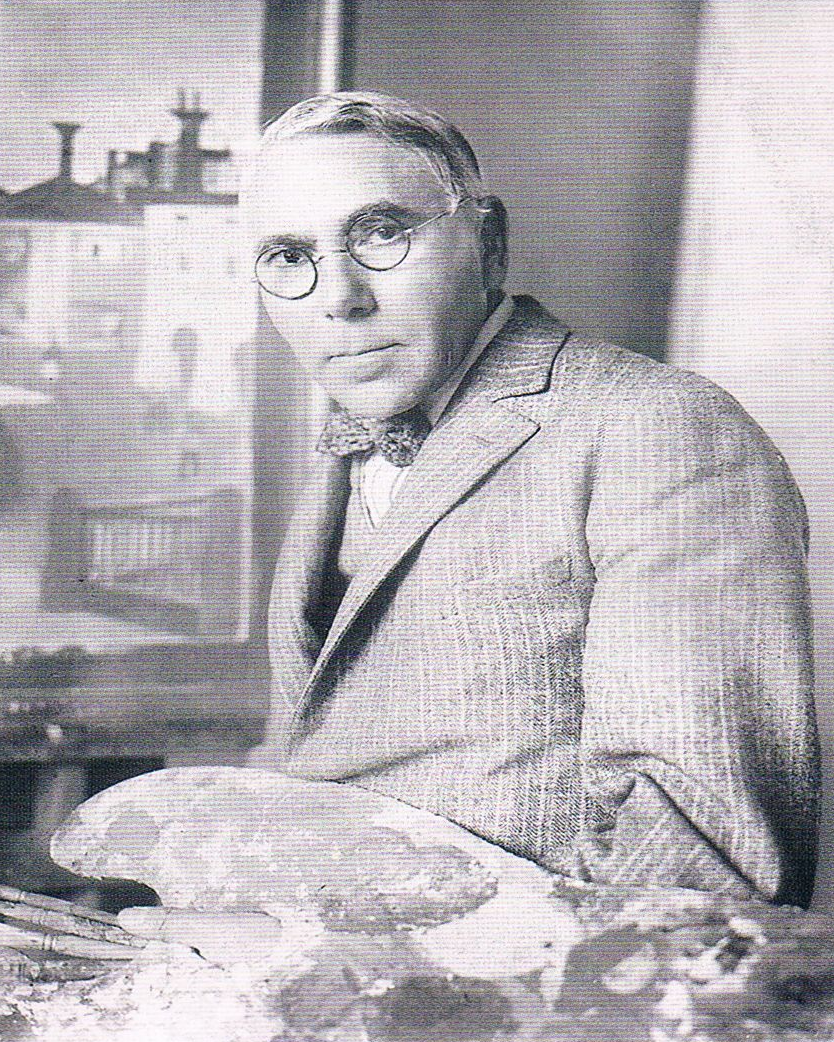
César Klein was a German Expressionist painter and designer, probably best known as one of the founders the November Group and the Arbeitsrat für Kunst. He is associated with the Düsseldorf school of painting.


César Klein was a German Expressionist painter and designer, probably best known as one of the founders the November Group and the Arbeitsrat für Kunst. He is associated with the Düsseldorf school of painting.


César Klein was a German Expressionist painter and designer, probably best known as one of the founders the November Group and the Arbeitsrat für Kunst. He is associated with the Düsseldorf school of painting.


César Klein was a German Expressionist painter and designer, probably best known as one of the founders the November Group and the Arbeitsrat für Kunst. He is associated with the Düsseldorf school of painting.


César Klein was a German Expressionist painter and designer, probably best known as one of the founders the November Group and the Arbeitsrat für Kunst. He is associated with the Düsseldorf school of painting.


César Klein was a German Expressionist painter and designer, probably best known as one of the founders the November Group and the Arbeitsrat für Kunst. He is associated with the Düsseldorf school of painting.


Walter Dexel was a German painter, commercial graphic designer, and transportation planner. He also functioned as an art historian and directed a museum in Braunschweig during the Second World War.
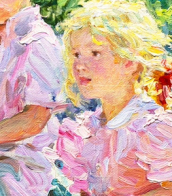

Günther Uecker is a German sculptor, op artist and installation artist.


Günther Uecker is a German sculptor, op artist and installation artist.


Günther Uecker is a German sculptor, op artist and installation artist.


Günther Uecker is a German sculptor, op artist and installation artist.


Günther Uecker is a German sculptor, op artist and installation artist.


Günther Uecker is a German sculptor, op artist and installation artist.


Günther Uecker is a German sculptor, op artist and installation artist.


César Klein was a German Expressionist painter and designer, probably best known as one of the founders the November Group and the Arbeitsrat für Kunst. He is associated with the Düsseldorf school of painting.


Günther Uecker is a German sculptor, op artist and installation artist.


Günther Uecker is a German sculptor, op artist and installation artist.


Günther Uecker is a German sculptor, op artist and installation artist.


Günther Uecker is a German sculptor, op artist and installation artist.


Günther Uecker is a German sculptor, op artist and installation artist.


Günther Uecker is a German sculptor, op artist and installation artist.

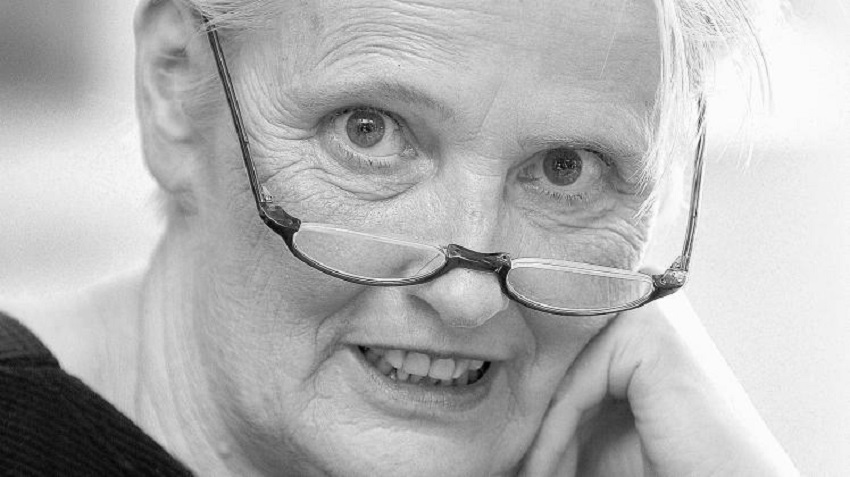
Elsbeth Arlt was a German conceptual artist, graphic artist and writer.


César Klein was a German Expressionist painter and designer, probably best known as one of the founders the November Group and the Arbeitsrat für Kunst. He is associated with the Düsseldorf school of painting.


César Klein was a German Expressionist painter and designer, probably best known as one of the founders the November Group and the Arbeitsrat für Kunst. He is associated with the Düsseldorf school of painting.


Paul Klee, a Swiss-born German artist, was renowned for his unique contribution to the art world, blending elements from expressionism, cubism, and surrealism. Born on December 18, 1879, in Münchenbuchsee, Switzerland, Klee was the second child of a German music teacher and a Swiss singer. Despite early musical talent, Klee pursued visual arts, influenced by a dissatisfaction with the state of modern music and a desire for creative freedom.
Klee's artistic journey began in earnest after he decided against a career in music, despite his exceptional skills with the violin. His education at the Academy of Fine Arts in Munich under the guidance of Heinrich Knirr and Franz von Stuck was crucial in shaping his artistic direction. Although he struggled with color initially, Klee later became a master of color theory, a transition marked by his transformative visit to Tunisia in 1914. This trip was a pivotal moment, leading Klee to declare, "Color and I are one. I am a painter".
Throughout his career, Klee's work was characterized by a profound sense of experimentation and innovation. He explored the boundaries of abstract art, drawing inspiration from his vast interests, including literature, music, and his own theories on art and aesthetics. His lectures on form and design theory at the Bauhaus, where he taught alongside luminaries like Wassily Kandinsky, are considered as seminal to modern art as Leonardo da Vinci's treatises were to the Renaissance.
Klee's art is celebrated for its intricacy, humor, and the ability to express complex themes through seemingly simplistic and childlike forms. His notable works, such as "Twittering Machine" (1922) and "Highway and Byways" (1928), showcase his skill in using color, shape, and line to evoke depth and emotion.
For collectors and art and antiques experts, Klee's legacy is a testament to the power of innovation and the search for personal expression within the avant-garde movements of the 20th century. His works, housed in prestigious museums and galleries around the world, continue to inspire and intrigue.
If you're passionate about art and wish to stay informed about new discoveries and sales related to Paul Klee's works, consider signing up for updates. This subscription will ensure you're alerted to upcoming auction events and product sales, allowing you to deepen your collection and appreciation of this remarkable artist's legacy.

